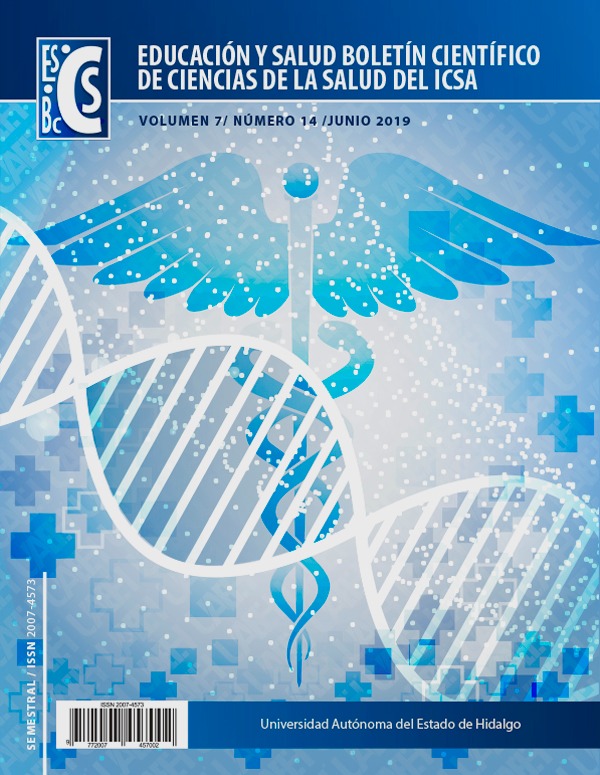Extraction of Antioxidants of Beetroot (Beta vulgaris) Residue by Ultrasound: Comparison with Conventional Method
Abstract
The beetroot residue has attracted attention among the scientific community for its nutritional composition, mainly for its antioxidants, which are important in the diet of people since they reduce the cellular damage generated by free radicals that are normally generated in the metabolism and during oxidative stress of non-communicable diseases; however, this waste is not consumed or marketed. For these reasons some methods are developed for the extraction of compounds without the use of solvents such as ultrasound (US), being an alternative for the extraction of compounds conserving their natural characteristics. The objective of this study was to extract the antioxidants from the beetroot residue (Beta vulgaris) using conventional and emerging technology. An aqueous, ethanolic, macerated and US extract was obtained. The results showed that in total phenolic compounds (TPC), the extraction by US obtained more of these compounds (534.64 AGE / 100g bs) with respect to the control. However, the highest extraction of betanins and betaxanthines was with water (1009.01 and 764.18 mg BE / 100g bs). Ultrasound is an emerging technology that could be used to extract antioxidant compounds from waste from food processing, reducing energy consumption, improving shelf life and product quality.
Downloads
References
Castellanos-Santiago, E., & Yahia, E. M. (2008). Identification and quantification of betalains from the fruits of 10 Mexican prickly pear cultivars by high-performance liquid chromatography and electrospray ionization mass spectrometry. Journal of Agricultural and Food Chemistry, 56(14), 5758-5764.
Chauhan, S. P., Sheth, N. R., Rathod, I. S., Suhagia, B. N., & Maradia, R. B. (2013). Analysis of betalains from fruits of Opuntia species. Phytochemistry reviews, 12(1), 35-45.
Czapski, J., Mikołajczyk, K., & Kaczmarek, M. (2009). Relationship between antioxidant capacity of red beet juice and contents of its betalain pigments. Polish journal of food and nutrition sciences, 59(2).
Goñi, I., & Hervert-Hernández, D. (2011). By-products from plant foods are sources of dietary fibre and antioxidants. In Phytochemicals-bioactivities and impact on health. IntechOpen.
Ignat, I., Volf, I., Popa, V. (2011). A critical review of methods for characterisation of polyphenolic compounds in fruits and vegetables. Food chemistry, 126(4), 1821-1835.
Koubaa, M., Barba, F. J., Grimi, N., Mhemdi, H., Koubaa, W., Boussetta, N., & Vorobiev, E. (2016). Recovery of colorants from red prickly pear peels and pulps enhanced by pulsed electric field and ultrasound. Innovative food science & emerging technologies, 37, 336-344.
Kujala, T. S., Loponen, J. M., Klika, K. D., & Pihlaja, K. (2000). Phenolics and betacyanins in red beetroot (Beta v ulgaris) root: Distribution and effect of cold storage on the content of total phenolics and three individual compounds. Journal of Agricultural and Food Chemistry, 48(11), 5338-5342.
Li, H., Chen, B., & Yao, S. (2005). Application of ultrasonic technique for extracting chlorogenic acid from Eucommia ulmodies Oliv.(E. ulmodies). Ultrasonics Sonochemistry, 12(4), 295-300.
Makris, D. P., Boskou, G., & Andrikopoulos, N. K. (2007). Recovery of antioxidant phenolics from white vinification solid by-products employing water/ethanol mixtures. Bioresource technology, 98(15), 2963-2967.
Merken, H. M., & Beecher, G. R. (2000). Measurement of food flavonoids by high-performance liquid chromatography: a review. Journal of Agricultural and Food chemistry, 48(3), 577-599.
Ravichandran, K., Saw, N. M. M. T., Mohdaly, A. A., Gabr, A. M., Kastell, A., Riedel, H., & Smetanska, I. (2011). Impact of processing of red beet on betalain content and antioxidant activity. Food Res. Int. 50, 2011, pp. 670-675.
Reátegui, J. L. P., da Fonseca Machado, A. P., Barbero, G. F., Rezende, C. A., & Martínez, J. (2014). Extraction of antioxidant compounds from blackberry (Rubus sp.) bagasse using supercritical CO2 assisted by ultrasound. The Journal of Supercritical Fluids, 94, 223-233.
Ruberto, G., Renda, A., Daquino, C., Amico, V., Spatafora, C., Tringali, C., & De Tommasi, N. (2007). Polyphenol constituents and antioxidant activity of grape pomace extracts from five Sicilian red grape cultivars. Food Chemistry, 100(1), 203-210.
Sáyago-Ayerdi, S. G., & Goñi, I. (2010). Hibiscus sabdariffa L: source of antioxidant dietary fiber. Archivos latinoamericanos de nutrición, 60(1), 79-84.
Stintzing, F. C., Herbach, K. M., Mosshammer, M. R., Carle, R., Yi, W., Sellapan, S., Akoh, C. C., Bunch, R. & Felker, P. 2005. Color, betalain pattern, and antioxidant properties of cactus pear (Opuntia spp.) clones. Journal of Agricultural and Food Chemistry, 53(2): 442-451.
Tenore, G. C., Novellino, E., & Basile, A. (2012). Nutraceutical potential and antioxidant benefits of red pitaya (Hylocereus polyrhizus) extracts. Journal of functional foods, 4(1), 129-136.
Vulic, J.J., Tumbas, V.T., Savatović, S.M., Đilas, S.M., Ćetković, G.S., & Čanadanović-Brunet, J.M. (2011). Polyphenolic content and antioxidant activity of the four berry fruits pomace extracts. Acta periodica technologica, (42), 271-279.
Zafra-Rojas, Q., Cruz-Cansino, N., Quintero-Lira, A., Gómez-Aldapa, C., Alanís-García, E., Cervantes-Elizarrarás, A., ... & Ramírez-Moreno, E. (2016). Application of ultrasound in a closed system: optimum condition for antioxidants extraction of blackberry (Rubus fructicosus) residues. Molecules, 21(7), 950.










